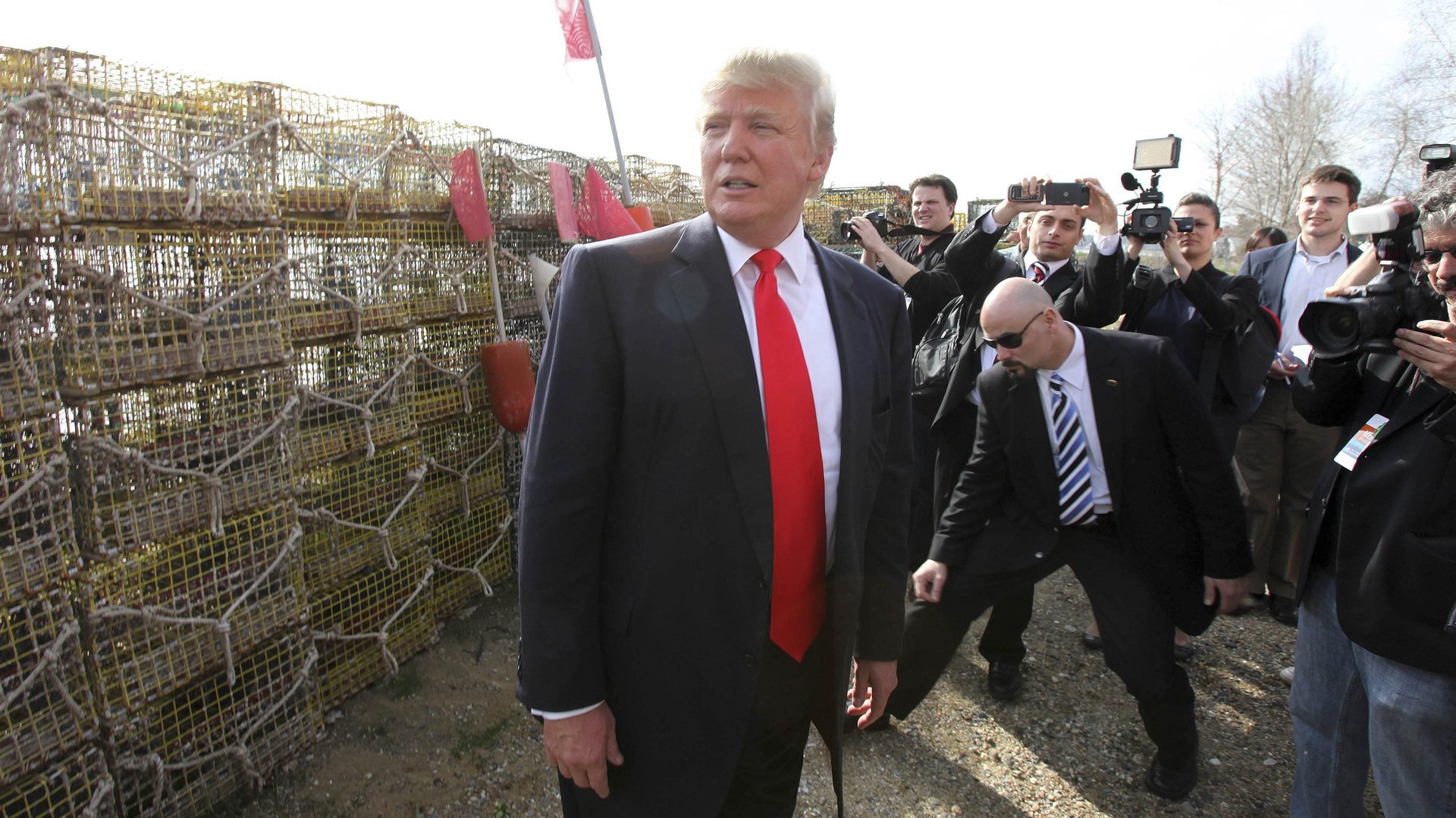Trump wants to save the lobster industry, after boiling it alive
This time two years ago, things were going swimmingly for Maine’s lobster industry. Demand for the state’s top export was climbing, especially in China, where imported lobster had become popular with the emerging middle class. By early 2019, nearly one-third of Maine’s lobsters were bound for Asian markets, and the price was rising—reaching nearly $5 per pound, the highest since the beginning of state records in 1880.


This time two years ago, things were going swimmingly for Maine’s lobster industry. Demand for the state’s top export was climbing, especially in China, where imported lobster had become popular with the emerging middle class. By early 2019, nearly one-third of Maine’s lobsters were bound for Asian markets, and the price was rising—reaching nearly $5 per pound, the highest since the beginning of state records in 1880.
As of last year, Maine’s catch was still near all-time high. But the state’s lobster and fishing industry is not “bigger and better than anyone ever thought possible,” as US president Donald Trump claimed yesterday. Under the Trump administration, the value of Maine’s lobster harvest has actually declined. The culprit is the US-China trade war.
The lobster fleet was traditionally seasonal, focused on serving summertime demand in the US, said Paul Anderson, executive director of the Maine Center for Coastal Fisheries, a research and advocacy group. But as the market expanded internationally, so did the half-a-billion-dollar industry’s operations. Ships and processing facilities began to operate year-round, and entrepreneurs and the state’s 7,000 independent lobster fishermen plowed investment into new equipment and facilities.
Since then, the seas have turned rough. The trouble started in mid-2018, when lobsters got embroiled in President Trump’s trade war with China. In retaliation for the Trump administration’s first round of tariffs on Chinese goods, China started charging an additional 25% tariff on US lobster. It rose to 35% in 2019. (This year the country dropped it to 30%.)
Of course, China was still buying lobster. Importers simply shifted to Canadian suppliers, which sell the same species from waters adjacent to Maine.
In Maine, exports tumbled drastically, the price crashed (“as cheap as hot dogs,” Anderson said), and suddenly the industry was vastly oversupplied.
“When the tariffs kicked in, it was a real gut punch because of all that capitalization,” Anderson said. But the industry managed to pivot again, cutting back on lobster hauls and doubling down on processed products, from canned lobster to pet food, that could still find year-round US demand.
Then the Covid-19 pandemic hit, falling especially hard on the biggest outlets for lobster: high-end restaurants, cruise ships, casinos, and resorts.
“All the creativity that had been fostered just had no market,” Anderson said.
On Wednesday, the Trump administration sought to undo some of the damage caused by its own policies and the pandemic, with a memo asking the Department of Agriculture to include lobster fisheries in its $30 billion farmer bailout program, which had originally been focused on Midwestern commodity crops. The memo also promises to make lobster a priority for the office of the US Trade Representative, as it negotiates with China to reduce tariffs and lock in purchasing agreements.
The second part of that equation, rescuing demand, is much more important than a bailout, Anderson said. And it’s not clear what Trump can do to help there, given that China’s own economy—and hence its appetite for lobsters—is still shaky.
“Nobody knows if the Asian market will re-emerge,” Anderson said. “If the demand is solid, then the whole value chain can come back to some level of normal. But that means Chinese people have to buy lobster, and I don’t know if pushing this button will make that happen. If it doesn’t work, the fleet will be in real trouble.”